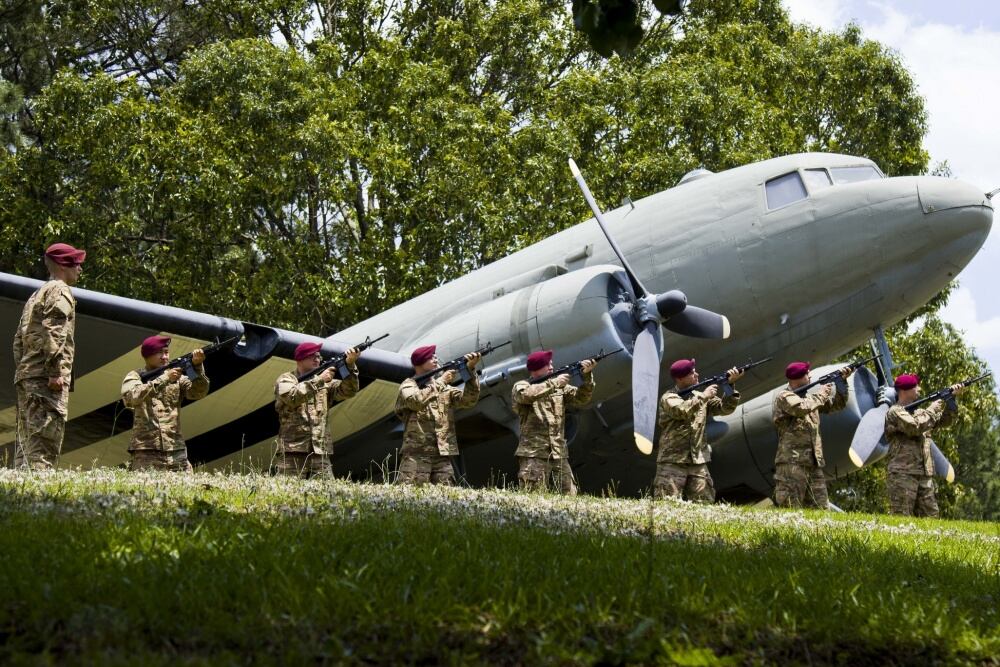Editor’s note: The following is an opinion piece. The writer is not employed by Military Times and the views expressed here do not necessarily represent those of Military Times or its editorial staff.
The Army took a giant step backward when the 82nd Airborne Division changed its policy on unit memorials to restrict final honors for service members who died by suicide.
These soldiers served our country with honor, often suffering post-traumatic stress or undiagnosed traumatic brain injury after repeated combat deployments. They died on a different battlefield from deep wounds that could not be seen. They deserve better.
Making such distinctions “sends the wrong message,” said then-Maj. Gen. William Troy, former commander of U.S. Army Alaska. After taking command in 2010, Troy mandated that service members who die by suicide be given the same memorial service as any other.
RELATED

“When you do a memorial service in a different way for a suicide victim, you’re adding to the stigmatization of a soldier who has a behavioral health problem. You don’t mean to, but what you’re doing is making it look like it’s his fault,” Troy said.
“We should be memorializing his service to the nation, his service in combat. He’s a volunteer, a member of a free nation who came and joined our ranks to defend this country, and that’s what we should be memorializing, not passing judgment on the manner of his death.”
A Department of Defense report published earlier this year showed that removing honors from unit memorials actually increases risk for those who are suffering by unintentionally associating suicide with crime, weakness and shame (Postvention in the U.S. Military: Survey of Survivors of Suicide Loss from 2010-2014).
According to the study, service members felt unit memorials stigmatized fellow troops and focused excessively on the manner of death, rather than on the life.
Thirteen years ago, my husband, a Marine Corps helicopter pilot, died by suicide. In the 1990s, early in his career, mental health issues were hidden and resources were difficult to find. Back then, the message was, “Suck it up,” but too often service members covered up.
Stigma, misinformation and a lack of confidential mental health care were growing problems. In the early 2000s, the military began to see an increase in suicides, and in 2009, a Department of Defense task force was formed to study the problem and recommend solutions.
One strategic initiative called for the military to “develop effective postvention programs to support families, service members, and unit leaders after suicide.”
They stated the following on unit memorials: “The death of a service member from suicide should not stymie the honoring of the decedent’s life and service.” (U.S. Department of Defense Task Force on the Prevention of Suicide by Members of the Armed Forces, 2010).
This resulted in an important shift in direction because it began to connect suicide to illness and injury, not bad behavior or selfishness. Commanders, chaplains, and other leaders began to talk about mental health as an illness that needed treatment. Over the past five years, leaders have reported a significant increase in those seeking help and attribute this advancement to the change in messaging.

The 82nd Airborne Division’s new policy ignores years of research on the suicidal mind and is based on a misinformed premise that all people who kill themselves “choose” to do so.
Most people contemplating suicide do not have full agency or control over their thoughts and feelings. Service members in this much pain are unable to think clearly.
They come to believe they are an embarrassment to their units and a burden to their families and that the world would be better off without them. They need to feel that if they come forward and say, “I am suffering and thinking of suicide,” they will be embraced and cared for.
Memorials are a crucial place to reach those who are grieving and may themselves be at heightened risk for suicide. Research shows those exposed to suicide are 3.5 times more likely to die by suicide.
To decrease risk among fellow service members, unit memorials must take a compassionate, non-judgmental approach to honor the lives of the fallen and not focus on their deaths. They must emphasize how important each service member is to the unit, that they matter, that they have options and can get better. There is a way to honor the life lived without glorifying the manner of death.
Finally, the 82nd Airborne Division’s new policy will cause additional lasting shame and pain for families of the fallen and anyone who loved or served with the deceased.
Suicide is not a crime, and victims of suicide should not be grouped with those who commit crimes. To do so is to deny them full military burial honors that for centuries have paid homage to the lives, service and sacrifice of the fallen.
While this decision may have been made in an honest attempt to decrease suicides, the policy nonetheless reveals a pervasive and unacceptable lack of knowledge among military leaders about what causes a soldier to die by suicide. Suicide is the result of a mental health issue paired with a perfect storm of stressors and deterrents to care. It is not a demonstration of weakness.
The 82nd Airborne Division is an elite unit with a fabled history and outsize influence throughout the Army. It leads by example. It is for that reason that the division should reverse this regrettable new policy. Soldiers’ lives depend on it.

Kim Ruocco is vice president of suicide prevention and postvention at Tragedy Assistance Program for Survivors (TAPS). She is the surviving widow of Maj. John Ruocco, a Marine helicopter pilot who died by suicide in 2005. She is an internationally known subject matter expert who develops best-practice, comprehensive programs and training for survivors of suicide and those who support them.





